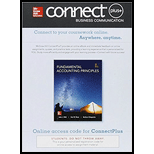
1)
Introduction:
Contribution Margin:
• Contribution Margin refers to the excess of Sales revenues over variable and fixed costs. Since it contributes to the overall profitability of the business it is referred to as contribution margin.
• Variable costs refer to the costs of manufacture that have a direct co-relation with the volume of the goods manufactured, i.e. the costs increase with an increase in the goods produced. Examples are costs of direct material and direct labor.
• Fixed costs refer to the costs of manufacture that have an inverse co-relation with the volume of the goods manufactured, i.e. the costs decrease with an increase in the goods produced. Examples are costs of factory rent,
Breakeven Point:
• Breakeven point is the monetary value of sales or number of units of sales where the contribution equals the fixed costs and the
• Breakeven point is considered as the minimum sales needed to sustain a business without incurring losses.
To Prepare:
One year multi product breakeven analysis
2)
Introduction:
Contribution Margin:
• Contribution Margin refers to the excess of Sales revenues over variable and fixed costs. Since it contributes to the overall profitability of the business it is referred to as contribution margin.
• Variable costs refer to the costs of manufacture that have a direct co-relation with the volume of the goods manufactured, i.e. the costs increase with an increase in the goods produced. Examples are costs of direct material and direct labor.
• Fixed costs refer to the costs of manufacture that have an inverse co-relation with the volume of the goods manufactured, i.e. the costs decrease with an increase in the goods produced. Examples are costs of factory rent, depreciation on plant and equipment
Breakeven Point:
• Breakeven point is the monetary value of sales or number of units of sales where the contribution equals the fixed costs and the profit / loss is zero.
• Breakeven point is considered as the minimum sales needed to sustain a business without incurring losses.
To Determine:
Results of One year multi product breakeven analysis
Want to see the full answer?
Check out a sample textbook solution
Chapter 21 Solutions
Connect 2-Semester Access Card for Fundamental Accounting Principles
- I need guidance with this general accounting problem using the right accounting principles.arrow_forwardHow is the cost of goods sold (COGS) calculated? Explanation.arrow_forwardDie Industries began operations on March 1 with cash of $150,000. All of March's $240,000 sales were on account. During March, no customer collections occurred. The cost of goods sold was $95,000, and there were no ending inventories or accounts payable. Use this information to determine the ending balance of cash on hand for March.arrow_forward

 AccountingAccountingISBN:9781337272094Author:WARREN, Carl S., Reeve, James M., Duchac, Jonathan E.Publisher:Cengage Learning,
AccountingAccountingISBN:9781337272094Author:WARREN, Carl S., Reeve, James M., Duchac, Jonathan E.Publisher:Cengage Learning, Accounting Information SystemsAccountingISBN:9781337619202Author:Hall, James A.Publisher:Cengage Learning,
Accounting Information SystemsAccountingISBN:9781337619202Author:Hall, James A.Publisher:Cengage Learning, Horngren's Cost Accounting: A Managerial Emphasis...AccountingISBN:9780134475585Author:Srikant M. Datar, Madhav V. RajanPublisher:PEARSON
Horngren's Cost Accounting: A Managerial Emphasis...AccountingISBN:9780134475585Author:Srikant M. Datar, Madhav V. RajanPublisher:PEARSON Intermediate AccountingAccountingISBN:9781259722660Author:J. David Spiceland, Mark W. Nelson, Wayne M ThomasPublisher:McGraw-Hill Education
Intermediate AccountingAccountingISBN:9781259722660Author:J. David Spiceland, Mark W. Nelson, Wayne M ThomasPublisher:McGraw-Hill Education Financial and Managerial AccountingAccountingISBN:9781259726705Author:John J Wild, Ken W. Shaw, Barbara Chiappetta Fundamental Accounting PrinciplesPublisher:McGraw-Hill Education
Financial and Managerial AccountingAccountingISBN:9781259726705Author:John J Wild, Ken W. Shaw, Barbara Chiappetta Fundamental Accounting PrinciplesPublisher:McGraw-Hill Education





